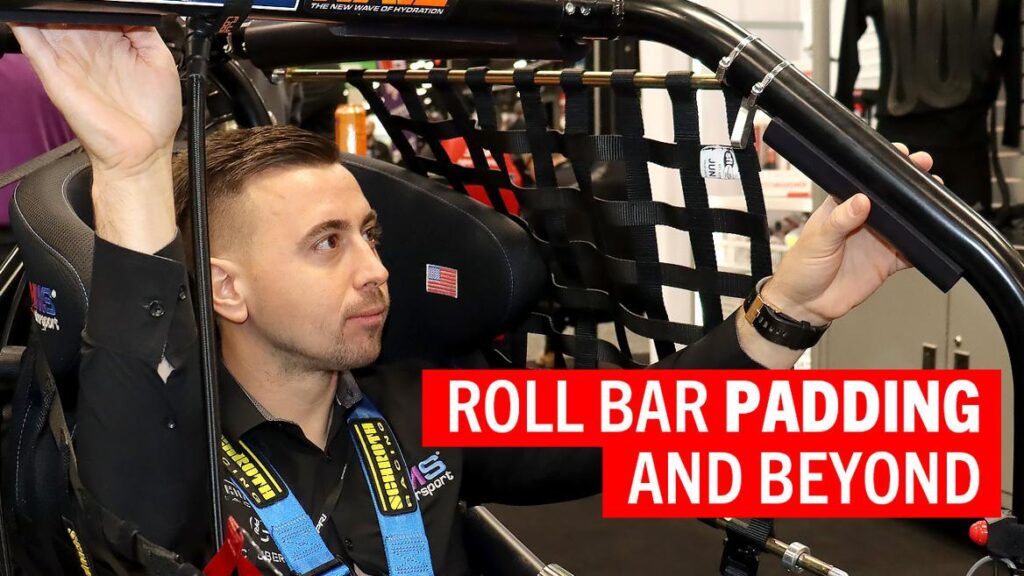Thank you for reading this post, don't forget to subscribe!
Even when properly strapped into your race car, during a crash your body might move up to a full foot. What are your extremities going to hit–and are those surfaces properly padded?
“In an accident, you might not think you’re moving that far,” Austin Langenstein, of HMS Motorsport, says. “Your belts might be tight, but you’re going to move quite a bit, which is what you want, it decelerates the body, but you don’t want to be hitting some hard surface or a roll cage.”
Automakers ensure that surfaces within the cabins of today’s cars have enough give to prevent serious injury for the car’s occupants’ flailing limbs. Plus, there are airbags to further reduce the chances of the occupants’ body parts from hitting hitting those areas. However, when you start stripping interiors, deactivating airbags and adding roll cages, you’re introducing hard surfaces that your body could come in contact with in a wreck. To soften the blow, you should add padding within 12 inches of wherever your body reaches stretched out.
Don’t use any ole padding, either. Pool noodle-type of material is seriously inadequate. First, it melts in a fire, and with roll bar padding typically near a door, that’s a poor place for a hot, melty goo. Second, pool noodle-type of padding doesn’t provide protection in a hard wreck. Instead use SFI– or FIA-rated high-density padding. It feels hard, but absorbs the energy of an impact. Think of it as a stiff spring. The more load, the more it compresses. The same goes for that high density padding.
Padding comes in two main varieties: roll bar and flat. Roll bar padding is designed for the specific loads that occurs when a body part hits a round object. Flat padding can be used everywhere else. There’s also dual-durometer padding, too, perfect for places such as a roof roll bar, where you might hit your head getting into a car, but also provides adequate protection in a hard crash.
Want some examples of what to pad? Roll bars, of course, but also don’t forget the areas where your legs may come into contact with, such as the door area, steering column and the right side of the footbox. You can also create knee knockers with flat padding, which hang from the steering column between your two legs to prevent your knees from hitting each other in a crash.
Now, you may be thinking, hey, isn’t a helmet supposed to absorb impacts with a roll bar. Yes, but do you want that being your only way of saving your noggin? “It’s all about energy absorption,” Austin explains. “There’s going to be a point where it’s going to make the helmet not be as effective. You don’t want the helmet be the part that gives where it cracks the shell and/or crushes the EPS, because then you’re getting into head injuries.”
What’s the ultimate value of padding? Consider its cost versus reward. “At about $30 for a 3-foot stick of roll bar padding, it’s pretty inexpensive for how important it is,” Austin says. “It can save you from a lot, including head trauma.”
Comments
My thinking on roll bar padding, I suspect having any body part contact a rollbar when padded in a low speed accident is about the same as a friend using a metal bat with padding and hitting your body. At the least its still going to hurt like heck, and always generate the proverbial reply, “it can’t hurt”, but it will.
Displaying 1-1 of 1 commentsView all comments on the GRM forums
You’ll need to log in to post.



